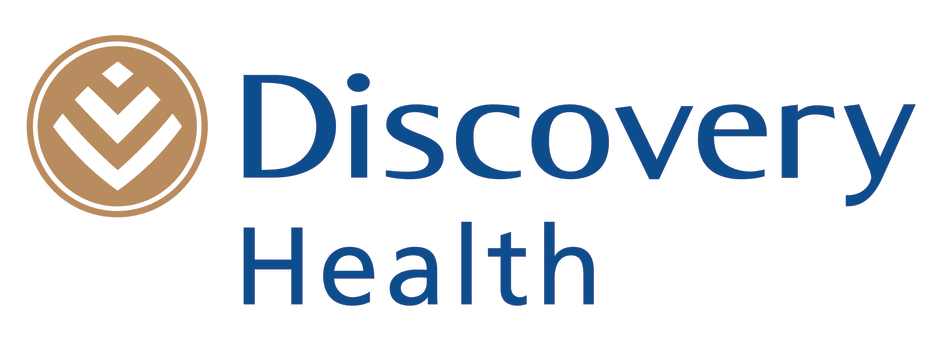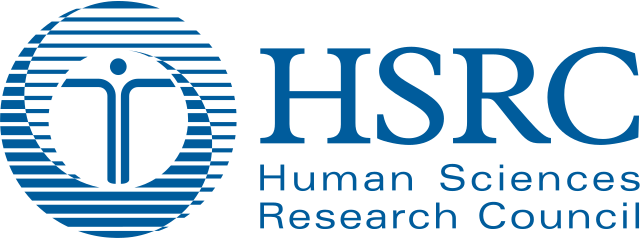Publications
INFORM Africa publications
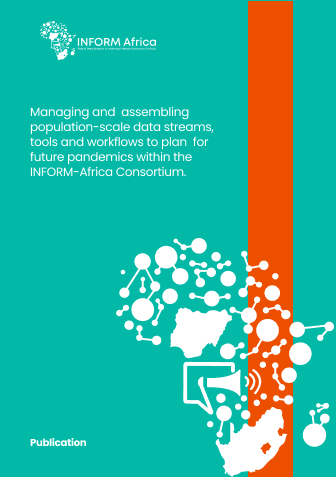
Managing and assembling population-scale data streams, tools and workflows to plan for future pandemics within the INFORM-Africa Consortium.
AUTHORS: Poongavanan J, Xavier J, Dunaiski M, Tegally H, Oladejo SO, Ayorinde O, Wilkinson E, Baxter C, de Oliveira T
YEAR OF PUBLICATION: 2023
Abstract
The Data Management and Analysis Core and Next Generation Sequencing Core will facilitate and support effective data management and analysis across INFORM Africa Consortium. We will capture and provide analysis support for relevant, timely, accurate and coherent data that can be interpreted and accessed across collaborators in multiple African countries and all collaborators in this Hub and future research hub collaborators through pilot projects. Ultimately, our focus is to enable increased access to high quality data and reproducible data analysis that can be used as tools to engage policy makers in view to better prepare for future pandemics.
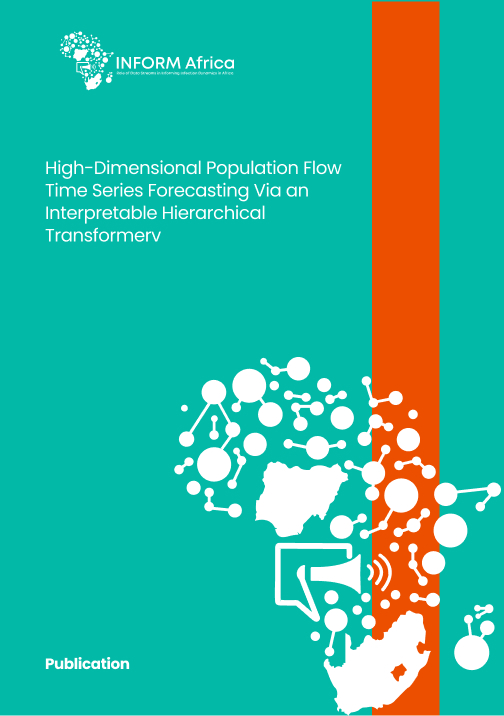
High-Dimensional Population Flow Time Series Forecasting Via an Interpretable Hierarchical Transformer
Authors: Songhua Hu and Chenfeng Xiong
Year of Publication: 2022
Abstract
Location-based service (LBS) data are emerging data sources in the transportation domain which contain large-scale, fine-grained, near real-time information in population flow. However, limited studies have built forecasting models based on population flow time series extracted from LBS data. This study introduces a deep learning framework, the Interpretable Hierarchical Transformer (IHTF), for high-dimensional multi-horizontal population flow time series forecasting and interpretation. A variety of cutting-edge deep learning technologies are fused, including the gated residual network to control nonlinearity and to bypass irrelevant information, the variable selection network to assign canonical variable-wise weight, the recurrent positional encoding to learn temporal locality, and the transformer architecture to capture temporal seasonality and trend. Various exogenous variables are included, endowing the framework with sensitivity in socioeconomics, demographics, land development, weather conditions, and holidays. Different internal parameters, such as variable selection weight and temporal attention weight, are extracted to explain underlying patterns learned by the framework. Numerical experiments based on one-year nationwide county-level population flow time series show that: 1) IHTF outperforms extensive baseline models in model accuracy, yielding symmetric mean absolute percentage error (SMAPE) from 8.420% (1-day-ahead) to 11.178% (21-day-ahead). 2) Model performances vary substantially across counties. Large counties broadly present better performances in relative metrics but worse performances in absolute metrics. 3) Feature relative importance generated by IHTF is similar to tree-based model but with more even distribution, among which point-of-interests (POIs) count, county location, median household income, and percentage of accommodation and food services are the most important static variables. 4) Attention weight demonstrates that IHTF can automatically learn trend and seasonality from raw time series. The framework can serve as a dynamic travel demand forecasting module in the transportation planning process. Outcomes can be fed into dynamic traffic assignment to obtain time-dependent link-level traffic conditions in future scenarios.
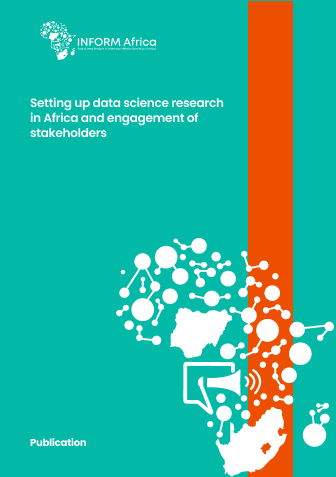
Setting up data science research in Africa and engagement of stakeholders
Authors: Fati Murtala-Ibrahim; Jibreel Jumare; Manhattan Charurat; Chenfeng Xiong, Vivek Naranbhai; Patrick Dakum; Shirley Collie; Waasila Jassat; Gambo Aliyu; Adetifa Ifedayo; Alash’le Abimiku
Year of Publication: 2023
Abstract
Data science explores the use of big data to gain deeper insights and generate new knowledge and innovations which can lead to economic growth and sustainable development. However, setting up data science research comes with challenges. How we engage stakeholders is a major factor that determines success. This Commentary highlights important considerations for stakeholder engagement based on the experiences of investigators in a data science for health discovery project underway in Nigeria and South Africa. The perspectives presented will guide implementation in this relatively new but rapidly growing research domain
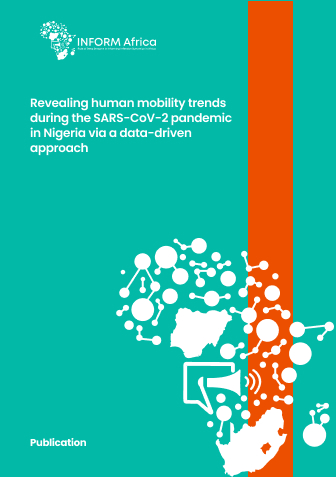
Revealing human mobility trends during the SARS-CoV-2 pandemic in Nigeria via a data-driven approach
Authors: Weiyu Luo; Chenfeng Xiong; Jiajun Wan; Ziteng Feng; Olawole Ayorinde; Natalia Blanco, Man Charurat, Vivek Naranbhai, Christina Riley, Anna Winters, Fati Murtala-Ibrahim and Alash’le Abimiku
Year of Publication: 2023
Abstract
We employed emerging smartphone-based location data and produced daily human mobility measurements using Nigeria as an application site. A data-driven analytical framework was developed for rigorously producing such measures using proven location intelligence and data-mining algorithms. Our study demonstrates the framework at the beginning of the SARS-CoV-2 pandemic and successfully quantifies human mobility patterns and trends in response to the unprecedented public health event. Another highlight of the paper is the assessment of the effectiveness of mobility-restricting policies as key lessons learned from the pandemic. We found that travel bans and federal lockdown policies failed to restrict trip-making behaviour, but had a significant impact on distance travelled. This paper contributes a first attempt to quantify daily human travel behaviour, such as trip-making behaviour and travelling distances, and how mobility-restricting policies took effect in sub-Saharan Africa during the pandemic. This study has the potential to enable a wide spectrum of quantitative studies on human mobility and health in sub-Saharan Africa using well-controlled, publicly available large data sets.
Publications with INFORM Africa acknowledgments
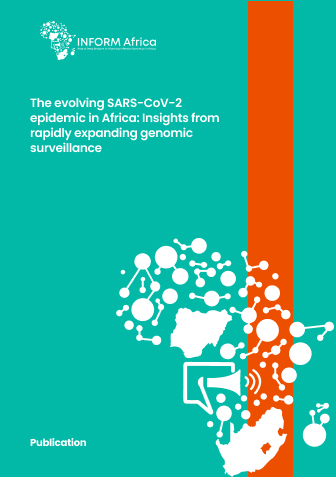
The evolving SARS-CoV-2 epidemic in Africa: Insights from rapidly expanding genomic surveillance
Authors: Houriiyah Tegally, James E. San, Matthew Cotton, Monika Moir, Bryan Tegomoh, Gerald Mboowa, Darren P. Martin, Cheryl Baxter, Arnold W. Lambisia et al.
Year of Publication: 2022
Abstract
In many regions of the world, the Alpha, Beta and Gamma SARS-CoV-2 Variants of Concern (VOCs) co-circulated during 2020-21 and fueled waves of infections. During 2021, these variants were almost completely displaced by the Delta variant, causing a third wave of infections worldwide. This phenomenon of global viral lineage displacement was observed again in late 2021, when the Omicron variant disseminated globally. In this study, we use phylogenetic and phylogeographic methods to reconstruct the dispersal patterns of SARS-CoV-2 VOCs worldwide. We find that the source-sink dynamics of SARS-CoV-2 varied substantially by VOC, and identify countries that acted as global hubs of variant dissemination, while other countries became regional contributors to the export of specific variants. We demonstrate a declining role of presumed origin countries of VOCs to their global dispersal: we estimate that India contributed <15% of all global exports of Delta to other countries and South Africa <1-2% of all global Omicron exports globally. We further estimate that >80 countries had received introductions of Omicron BA.1 100 days after its inferred date of emergence, compared to just over 25 countries for the Alpha variant. This increased speed of global dissemination was associated with a rebound in air travel volume prior to Omicron emergence in addition to the higher transmissibility of Omicron relative to Alpha. Our study highlights the importance of global and regional hubs in VOC dispersal, and the speed at which highly transmissible variants disseminate through these hubs, even before their detection and characterization through genomic surveillance.
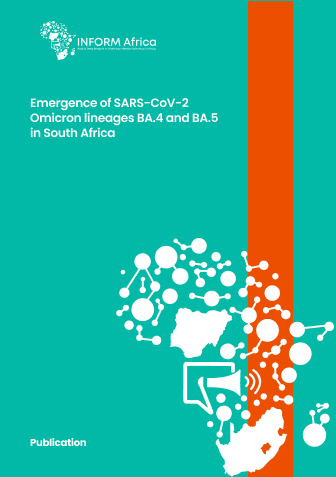
Emergence of SARS-CoV-2 Omicron lineages BA.4 and BA.5 in South Africa
Authors: Houriiyah Tegally, James E. San, Matthew Cotton, Monika Moir, Bryan Tegomoh, Gerald Mboowa, Darren P. Martin, Cheryl Baxter, Arnold W. Lambisia et al.
Year of Publication: 2022
Abstract
Three lineages (BA.1, BA.2 and BA.3) of the severe acute respiratory syndrome coronavirus 2 (SARS-CoV-2) Omicron variant of concern predominantly drove South Africa’s fourth Coronavirus Disease 2019 (COVID-19) wave. We have now identified two new lineages, BA.4 and BA.5, responsible for a fifth wave of infections. The spike proteins of BA.4 and BA.5 are identical, and similar to BA.2 except for the addition of 69–70 deletion (present in the Alpha variant and the BA.1 lineage), L452R (present in the Delta variant), F486V and the wild-type amino acid at Q493. The two lineages differ only outside of the spike region. The 69–70 deletion in spike allows these lineages to be identified by the proxy marker of S-gene target failure, on the background of variants not possessing this feature. BA.4 and BA.5 have rapidly replaced BA.2, reaching more than 50% of sequenced cases in South Africa by the first week of April 2022. Using a multinomial logistic regression model, we estimated growth advantages for BA.4 and BA.5 of 0.08 (95% confidence interval (CI): 0.08–0.09) and 0.10 (95% CI: 0.09–0.11) per day, respectively, over BA.2 in South Africa. The continued discovery of genetically diverse Omicron lineages points to the hypothesis that a discrete reservoir, such as human chronic infections and/or animal hosts, is potentially contributing to further evolution and dispersal of the virus.

Ethics and governance challenges related to genomic data sharing in southern Africa: the case of SARS-CoV-2
Authors: Prof Keymanthri Moodley, MBChB Nezerith Cengiz, MSc Med, Aneeka Domingo, MBChB Gonasagrie Nair, MBChB Adetayo Emmanuel Obasa, PhD Richard John Lessells, MBChB et al.
Year of Publication: 2022
Abstract
Data sharing in research is fraught with controversy. Academic success is premised on competitive advantage, with research teams protecting their research findings until publication. Research funders, by contrast, often require data sharing. Beyond traditional research and funding requirements, surveillance data have become contentious. Public health emergencies involving pathogens require intense genomic surveillance efforts and call for the rapid sharing of data on the basis of public interest. Under these circumstances, timely sharing of data becomes a matter of scientific integrity. During the COVID-19 pandemic, the transformative potential of genomic pathogen data sharing became obvious and advanced the debate on data sharing. However, when the genomic sequencing data of the omicron (B.1.1.529) variant was shared and announced by scientists in southern Africa, various challenges arose, including travel bans. The scientific, economic, and moral impact was catastrophic. Yet, travel restrictions failed to mitigate the spread of the variant already present in countries outside Africa. Public perceptions of the negative effect of data sharing are detrimental to the willingness of research participants to consent to sharing data in postpandemic research and future pandemics. Global health governance organisations have an important role in developing guidance on responsible sharing of genomic pathogen data in public health emergencies.
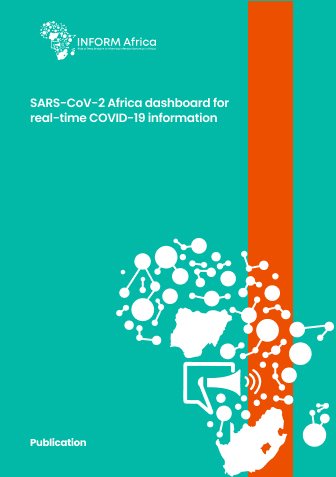
SARS-CoV-2 Africa dashboard for real-time COVID-19 information
Authors: Joicymara S. Xavier, Monika Moir, Houriiyah Tegally, Nikita Sitharam, Wasim Abdool Karim, James E. San, Joana Linhares, Eduan Wilkinson, David B. Ascher, Cheryl Baxter, Douglas E. V. Pires & Tulio de Oliveira
Year of Publication: 2023
Abstract
The SARS-CoV-2 Africa dashboard is an interactive tool that enables visualization of SARS-CoV-2 genomic information in African countries. The customizable app allows users to visualize the number of sequences deposited in each country, and the variants circulating over time. Our dashboard enables near real-time exploration of public data that can inform policymakers, healthcare professionals and the public about the ongoing pandemic.
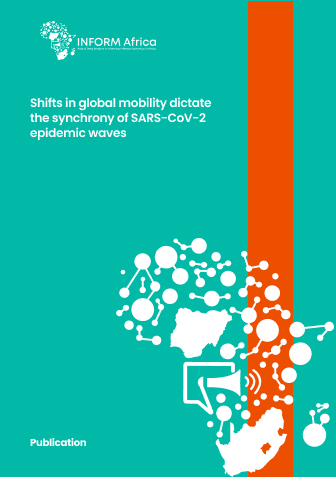
Shifts in global mobility dictate the synchrony of SARS-CoV-2 epidemic waves
Authors: Houriiyah Tegally, MSc, Kamran Khan, MD, Carmen Huber, MSA, Tulio de Oliveira, PhD, Moritz U G Kraemer, DPhil
Year of Publication: 2023
Abstract
Human mobility changed in unprecedented ways during the SARS-CoV-2 pandemic. In March and April 2020, when lockdowns and large travel restrictions began in most countries, global air-travel almost entirely halted (92% decrease in commercial global air travel in the months between February and April 2020). Initial recovery in global air travel started around July 2020 and subsequently nearly tripled between May and July 2021. Here, we aim to establish a preliminary link between global mobility patterns and the synchrony of SARS-CoV-2 epidemic waves across the world.
We compare epidemic peaks and human global mobility in two time periods: November 2020 to February 2021 (when just over 70 million passengers travelled) and November 2021 to February 2022 (when more than 200 million passengers travelled). We calculate the time interval during which continental epidemic peaks occurred for both of these time periods, and we calculate the pairwise correlations of epidemic waves between all pairs of countries for the same time periods.
We find that as air travel increases at the end of 2021, epidemic peaks around the world are more synchronous with one another, both globally and regionally. Continental epidemic peaks occur globally within a 20 day interval at the end of 2021 compared with 73 days at the end of 2020, and epidemic waves globally are more correlated with one another at the end of 2021.
This suggests that the rebound in human mobility dictates the synchrony of global and regional epidemic waves. In line with theoretical work, we show that in a more connected world, epidemic dynamics are more synchronized.

Global Expansion of SARS-CoV-2 Variants of Concern: Dispersal Patterns and Influence of Air Travel
Authors: Houriiyah Tegally, Eduan Wilkinson, Darren Martin, Monika Moir, Anderson Brito, Marta Giovanetti, Kamran Khan, Carmen Huber, Isaac I. Bogoch, James Emmanuel San, Joseph L.-H. Tsui, Jenicca Poongavanan, Joicymara S. Xavier, Darlan da S. Candido, Filipe Romero, Cheryl Baxter, Oliver G. Pybus, Richard Lessells, Nuno R. Faria, Moritz U.G. Kraemer, Tulio de Oliveira
Year of Publication: 2022
Abstract
In many regions of the world, the Alpha, Beta and Gamma SARS-CoV-2 Variants of Concern (VOCs) co-circulated during 2020-21 and fueled waves of infections. During 2021, these variants were almost completely displaced by the Delta variant, causing a third wave of infections worldwide. This phenomenon of global viral lineage displacement was observed again in late 2021, when the Omicron variant disseminated globally. In this study, we use phylogenetic and phylogeographic methods to reconstruct the dispersal patterns of SARS-CoV-2 VOCs worldwide. We find that the source-sink dynamics of SARS-CoV-2 varied substantially by VOC, and identify countries that acted as global hubs of variant dissemination, while other countries became regional contributors to the export of specific variants. We demonstrate a declining role of presumed origin countries of VOCs to their global dispersal: we estimate that India contributed <15% of all global exports of Delta to other countries and South Africa <1-2% of all global Omicron exports globally. We further estimate that >80 countries had received introductions of Omicron BA.1 100 days after its inferred date of emergence, compared to just over 25 countries for the Alpha variant.



